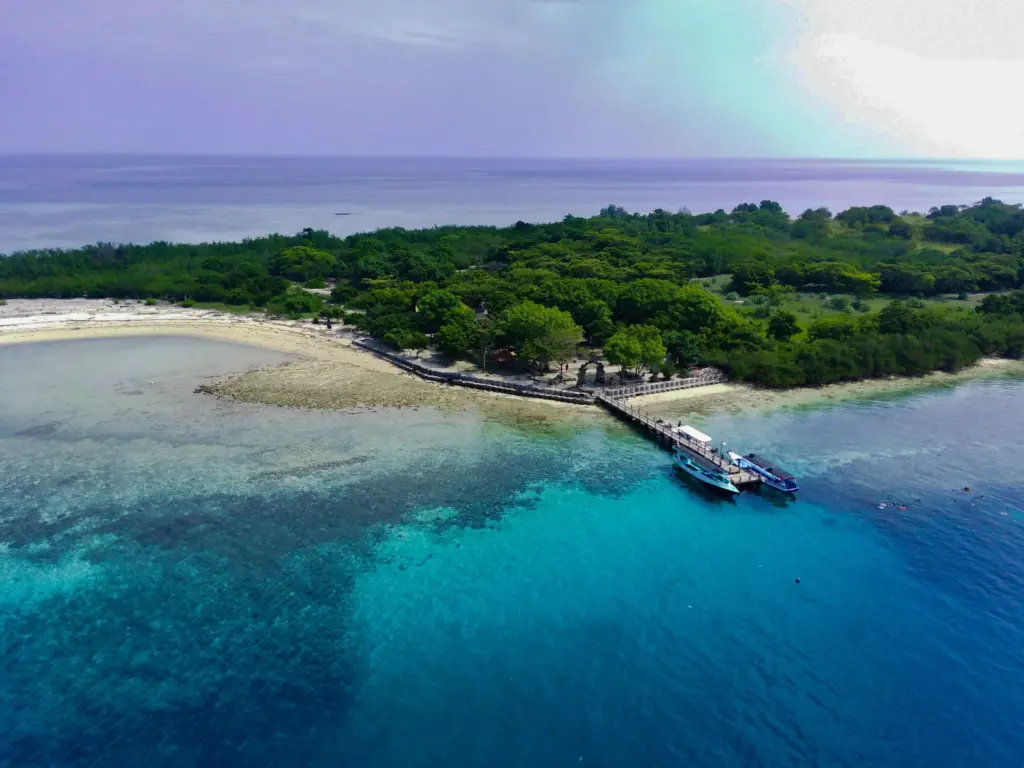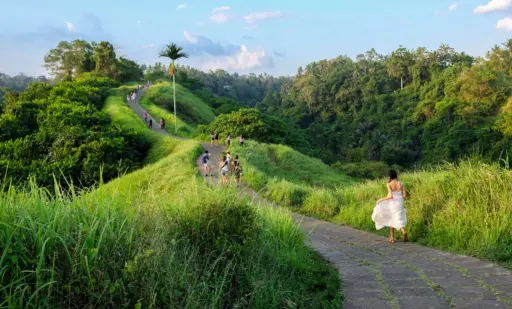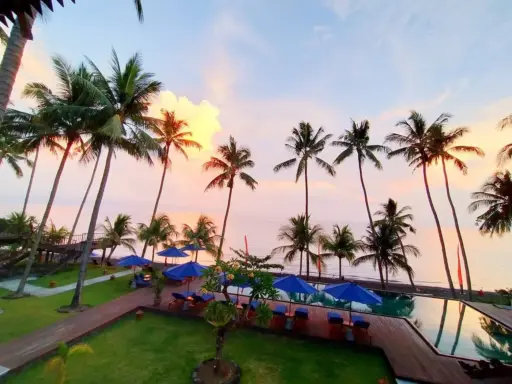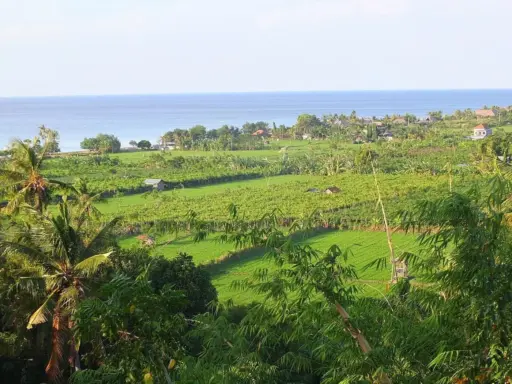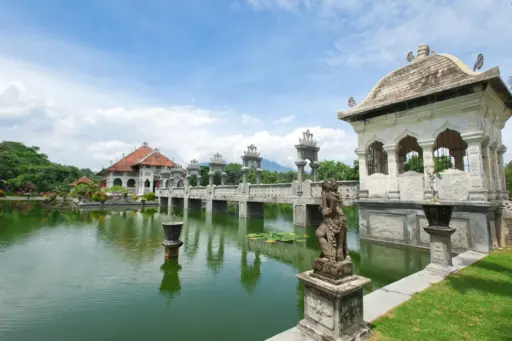From Lembongan’s laid-back charm to Penida’s cliffs, Bali’s islands offer escape, peace, diving, beauty, and adventure.
When most people think of Bali, they imagine lush rice fields, beach clubs, and temple ceremonies. But scattered just beyond the main island are smaller, quieter escapes that offer a different side of paradise. These are the islands of Bali – places where time slows down, the crowds thin out, and nature takes centre stage. Each one has a distinct character, from the laid-back rhythms of Nusa Lembongan to the wildlife sanctuary of Menjangan Island. Visiting one or more of these islands adds depth to any Bali trip and gives a taste of what the island once was: raw, beautiful, and unhurried.
Nusa Lembongan and Nusa Ceningan: Compact Charm and Coastal Beauty
Among all of Bali’s islands, Nusa Lembongan is the most popular and easiest to access. Just a 30-minute fast boat from Sanur, it offers enough infrastructure to be comfortable, but has managed to avoid the overdevelopment seen elsewhere. Lembongan is compact – you can get around easily on a scooter or bicycle – and it strikes a rare balance between local life and tourism.
Most travellers arrive at Jungut Batu Beach, where small boats land directly on the sand. From there, it is a short ride to scenic spots like Dream Beach, Sandy Bay, and Devil’s Tear, a rocky outcrop that puts on a dramatic show when waves crash against its cliffs. On calmer days, it is one of the best places on the island to catch a sunset.
The reefs surrounding Lembongan are healthy and full of life. Snorkelling and diving trips leave daily for nearby spots like Mangrove Point, Crystal Bay, and Manta Point, where you can swim with manta rays. The waters are generally calm and visibility is good year-round, making it suitable for beginners and families. Inland, seaweed farms still operate in pockets of the island, especially near Lebaoh. These simple plots, visible at low tide, are a reminder that traditional livelihoods continue alongside the growing tourism scene.
Cross the Yellow Bridge and you reach Nusa Ceningan, Lembongan’s smaller and sleepier sister. It is even more relaxed here, with a handful of small resorts and warungs facing the sea. Ceningan is known for Blue Lagoon, a surreal, electric-blue bay framed by cliffs. It used to be famous for cliff jumping, but today most visitors come for the view or to enjoy a quiet drink with the sound of waves below. The island also has some quiet coastal walks and a few hidden coves, perfect for an afternoon ride and a bit of exploration.
Nusa Penida: Wild and Dramatic
Just across deeper water is Nusa Penida, the largest and wildest of Bali’s offshore islands. Penida has risen to global fame thanks to the dramatic cliffside of Kelingking Beach, which looks like a T-Rex from above. Other Instagram-favourites include Diamond Beach, Atuh Beach, and Broken Beach, each with its own rugged charm. Penida is beautiful, but more spread out and physically demanding than Lembongan. The roads have improved but are still narrow and winding in parts, and getting to the famous beaches often involves steep hikes. It is worth staying overnight if you want to explore more than just the top highlights.
Beyond the cliffs, Penida also has a spiritual side. The Goa Giri Putri cave temple, reached by ducking through a crack in a rock, is an active place of worship. Inland, you will find quiet villages, remote water temples, and a slower pace of life. The island’s dramatic scale and less polished edges make it feel adventurous and real.
Menjangan Island: Underwater Paradise
Now turn your attention west, to a different part of Bali altogether. In the northwest, within the boundaries of West Bali National Park, lies Menjangan Island – a small, uninhabited island known for its stunning coral reefs and calm waters. Menjangan means “deer” in Indonesian, and the island is named after the wild Javan deer that swim across from the mainland during certain times of year.
Menjangan is not about beaches or village life – it is about the underwater world. The coral walls and shallow reefs here are among the best in Bali, with excellent visibility and a rich variety of marine life. Divers come for the drop-offs, sponges, and vibrant fish schools; snorkellers can explore shallow reefs just off the beach. The currents are gentle, making it ideal for all skill levels.
The island is also home to a few shrines and temples, including a large white Ganesh statue and a picturesque sea temple perched on a rocky edge. You cannot stay overnight on Menjangan, but day trips are easy to arrange from Pemuteran or Lovina, both quiet villages that make great bases for nature-focused travellers. Permits and guides are required, as the island sits within a protected marine zone.
The Gilis and Serangan: Beyond Bali’s Borders
Beyond these key islands, there are others worth noting. The Gili Islands – Trawangan, Air, and Meno – are technically part of Lombok, but are easily reached by fast boat from Bali’s east coast. While Gili Trawangan is known for its party vibe, Gili Air offers a relaxed blend of comfort and calm. Gili Meno, the quietest of the three, is often chosen by honeymooners and travellers looking to truly unplug. All three Gilis have white sand beaches, no cars or motorbikes, and excellent snorkelling just off shore – especially turtle spotting along the reef edges.
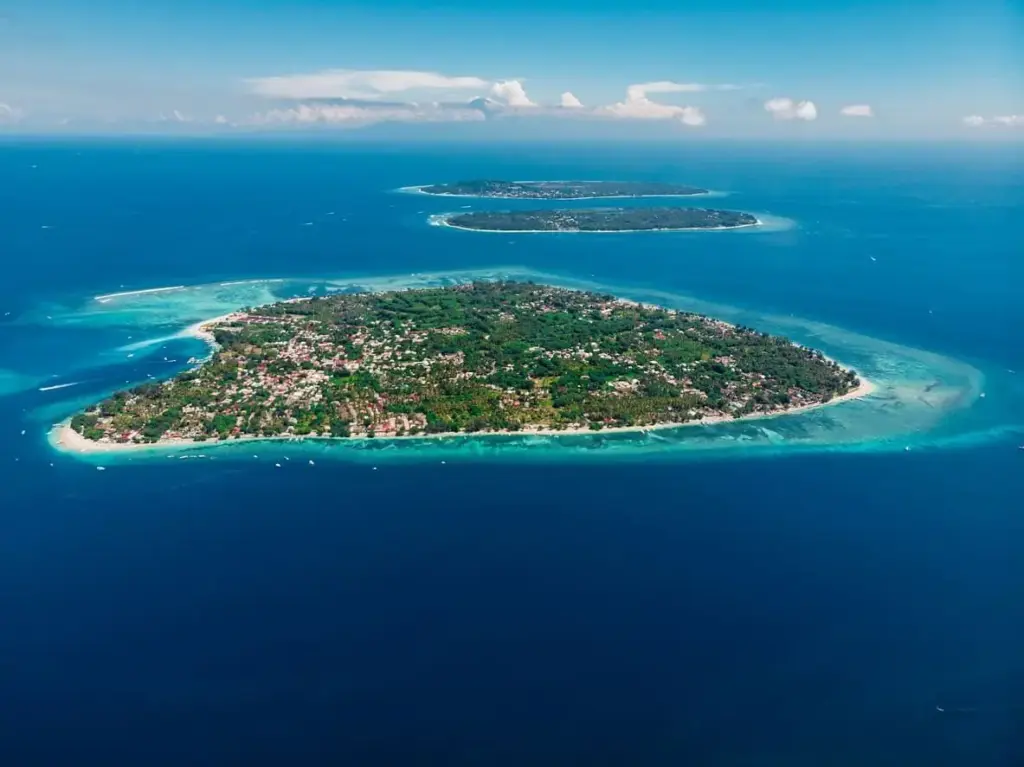
Back near Bali’s southeast, Serangan Island is often overlooked. It was once a true island but is now connected to the mainland by a causeway. While it does not offer the same scenery or remoteness as Lembongan or Menjangan, it has its own niche. Surfers come here for reef breaks, and families often visit the Turtle Conservation and Education Centre, which works on rehabilitating and releasing endangered green sea turtles. Serangan also has a quiet, local feel, especially around its small fishing community.
Getting There and Choosing Your Island
Getting to Bali’s islands is easy with a bit of planning. Boats to Lembongan, Ceningan, and Penida leave daily from Sanur, with travel times of around 30–45 minutes. Menjangan Island is reached from the Pemuteran area in the northwest, typically as part of a guided day tour. The Gilies are a bit farther – 2 to 2.5 hours from Padang Bai or Amed, depending on sea conditions. Most fast boat operators include hotel transfers and luggage handling.
Each island has its own rhythm. Nusa Lembongan is for those who want just enough comfort with plenty of nature. Penida is dramatic and adventurous. Ceningan is peaceful and compact. Menjangan is about coral, silence, and wildlife. The Gilis are barefoot, tropical simplicity. Together, these islands form a necklace around Bali – each offering a different gem for those willing to step off the main path.
Whether you want to dive with mantas, watch the sun sink into the sea from a clifftop, or simply spend a few days without hearing a car horn, the islands of Bali deliver. They are more than side trips – they are small, self-contained worlds that remind you how much Bali still has to offer when you look beyond the obvious.
